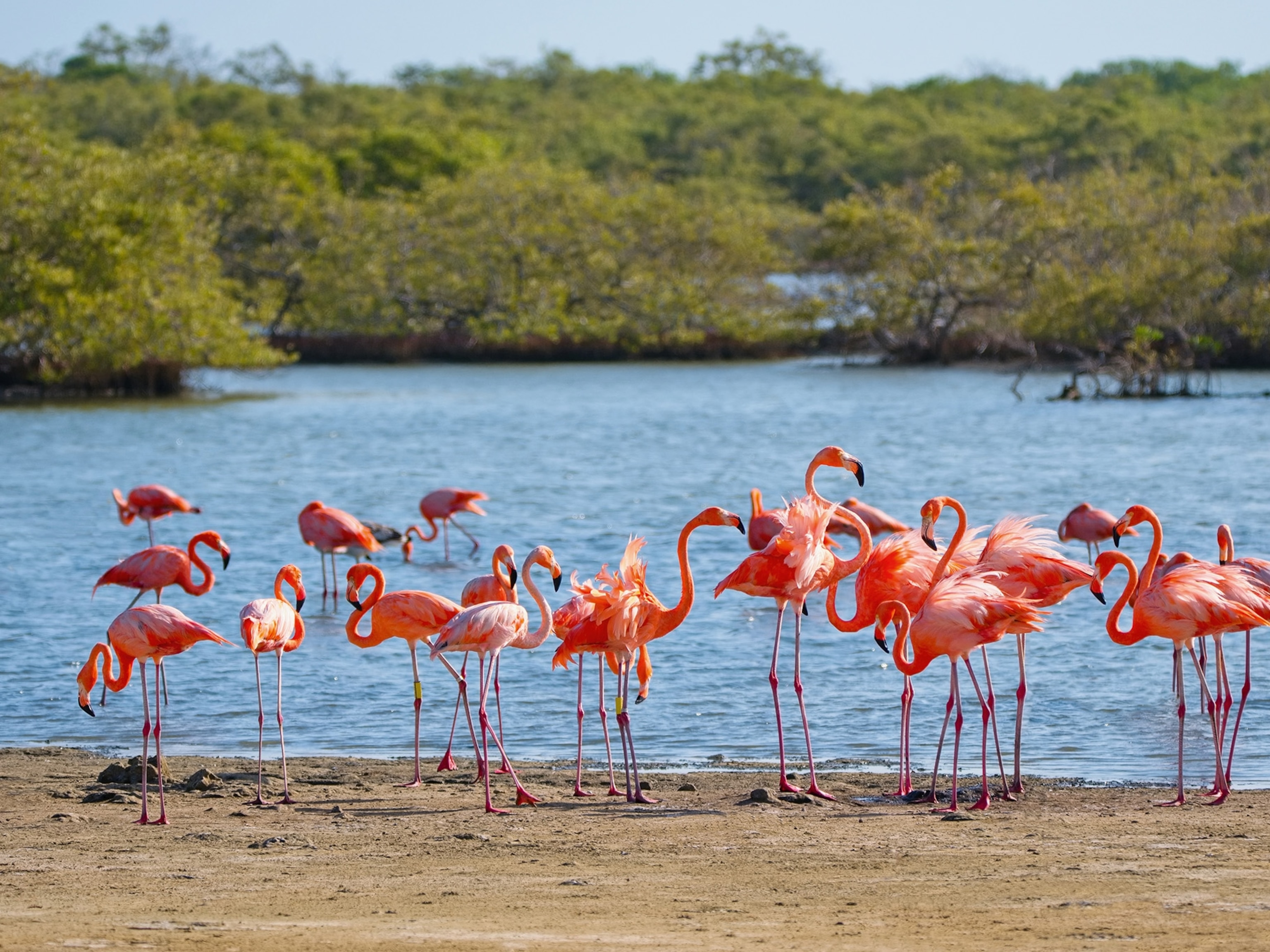The cold, harsh winters of cities like Chicago, New York, and Seattle are no match for the tiny monk parakeet. Native to several countries in South America, the bright green bird, also known as the Quaker parrot, is one of 25 parrot species once kept only as pets in the U.S. that are now thriving in the wild of 23 states.
While most have stuck to warm-weather states like California, Texas, and Florida, the monk parakeet doesn't seem concerned with dropping temperatures or frozen food sources.
"We think they're basically pre-adapted to survive in cold climates because they build their own nests and they can vary their diets so dramatically across the year," says Stephen Pruett-Jones, an ecologist at the University of Chicago, who has been studying birds for decades. "They roost in their nest every single night of the year, so the nest is really more like a home to the monk parakeet. And their diet changes completely during the winter to seed in backyard bird feeders."

During the research for a paper published April 9 in the Journal of Ornithology, Pruett-Jones, along with Jennifer Uehling, currently working on her Ph.D. at Cornell University, and Jason Tallant, of the University of Michigan, found that of the 190 parrot species that have been imported to the U.S. as pets since the 1950s and '60s, 56 have been spotted in the wild of 43 states. Twenty-five of those species have established breeding populations.
With information collected from two databases of bird sightings—the Christmas Bird Count, an annual bird census from the National Audubon Society, and eBird, an online database run by the Cornell Lab of Ornithology where bird watchers can register birds they've seen—the three researchers were able to track not only which species are living in the wild but also those that are breeding and creating stable populations. The most common three species are the monk parakeet, the red-crowned Amazon, and the nanday parakeet.
According to Pruett-Jones, some non-native colonies could be crucial to the survival of their species. The endangered red-crowned Amazon, for example, is now more plentiful in California than in its native Mexico, where it faces threats from trapping for the pet trade and loss of habitat due to unsustainable logging, wood harvesting, and clearing for agriculture. (Read about how the pet trade itself is threatening some species of parrots.)
For Ian Newton, an ecologist and ornithologist at the Centre for Ecology and Hydrology, a UK-based governmental environmental research organization, who was not involved in the study, the information it provides on strong, naturalized colonies could have positive conservation implications.
"The main conservation value, I think, is in providing a safe home for at least one species which is endangered and declining in its native home," he says. "Its establishment in the U.S. could save the species, and perhaps provide birds for reintroduction to the ancestral range if conditions improve there."
Unlike the red-crowned Amazon, the monk parakeet doesn't have a problem with numbers and continues to expand its habitat across several countries and continents. But that doesn't necessarily mean the species has adapted to its new surroundings. (Meet the colorful people dedicated to rescuing pet parrots in the U.S.)
While Pruett-Jones and a student are currently looking at the possibility that there have been anatomical or morphological adaptations in the monk parakeet—"We're testing the idea that maybe they're growing thicker feathers or more dense feathers in northern and colder climates as a way of staying warm longer," he says—it's also possible the parrot has just managed to find a new habitat that is already suitable for its survival.
"It's pretty clear that, even though in their native range these species live in the wild, of course, in the United States, virtually every one of these naturalized populations is living in human-modified habitats," he says. "Here, in the wild in the United States, they're urban and parkland and city dwellers."
And while it hasn't become an agricultural pest in the U.S. like it's known to be in its native South America, the monk parakeet has been known to cause a different set of problems in its new urban habitat.
"Monk parakeets love to nest on man-made structures," Pruett-Jones says. "They like to nest on transmission poles and power substations and transformers and telephone lines. They cause millions of dollars of damage every year because of their nests."






